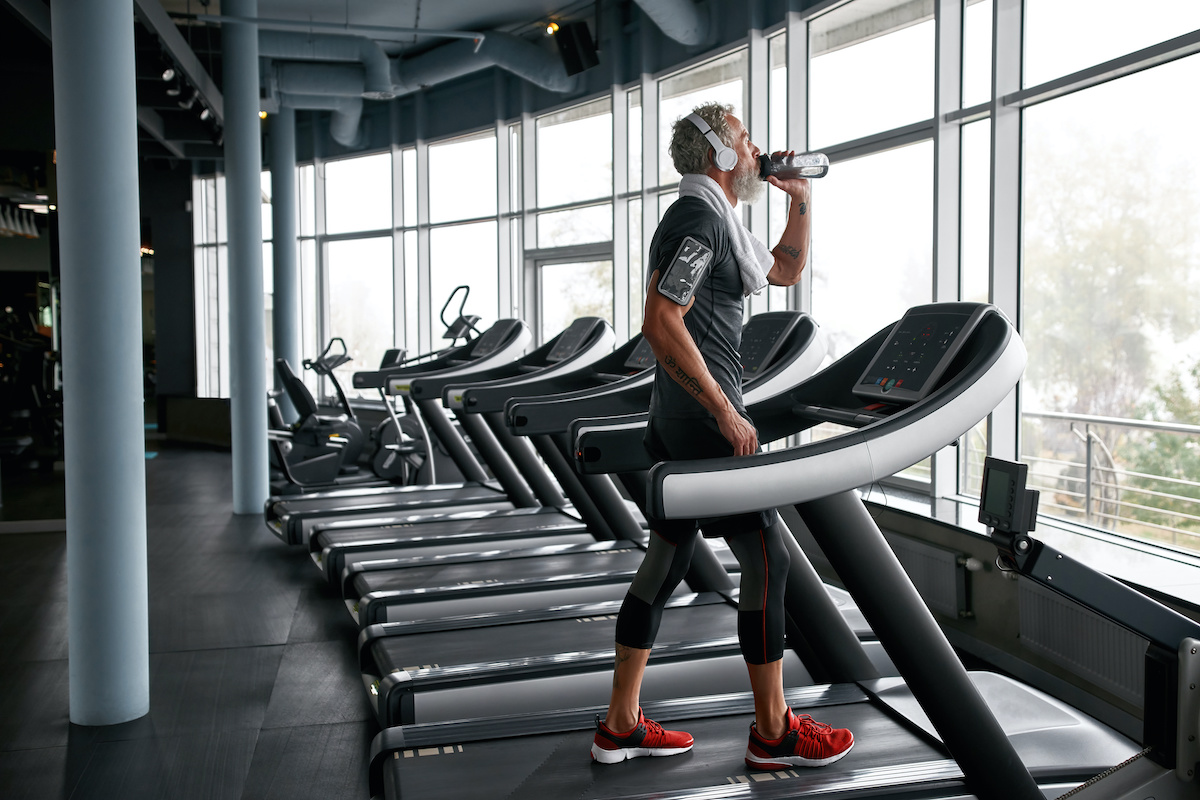What Is the 12-3-30 Workout? The TikTok Fitness Trend Leading the Treadmill Renaissance

If you’ve downloaded TikTok for fitness inspiration, there’s a good chance you’ll have come across the infamous ‘12-3-30’ workout. The trend, which counts the treadmill as its secret weapon, is currently going viral on the social media platform.
The 12-3-30 workout was first brought to our attention by influencer Lauren Giraldo (@laurengiraldo), who credited the treadmill routine for helping her to lose weight in a YouTube video back in 2019. Since then, it’s been gathering some serious steam on TikTok, where the hashtag #12330workout has now been viewed over 100 million times.
For the uninitiated, the unique thing about this particular #FitTok trend is it doesn’t actually involve any running, instead utilising the humble benefits of walking. Here we break down what you need to know, with some PT advice on whether it’s actually worth a try.
What Is The 12-3-30 Workout?
Now, don’t worry, the number combination ‘12-3-30’ doesn’t denote the gruelling amount of rounds you’ll need to sweat through. Instead, it means walking on a treadmill for 30 minutes, to an incline of 12 percent, and a speed of three miles per hour (or 4.8km, depending on the type of treadmill you’re using). Essentially, it’s a fast-paced walk up a hill, that spikes your heart rate without the need to break into a run.
Unlike HIIT treadmill workouts, the pace doesn’t change, so you can easily zone out to a podcast or Netflix episode while you train.

What Are The Benefits?
Incline walking is a type of LISS activity (Low-Intensity Steady State training) so it doesn’t put undue pressure on your joints, which can be a major concern if you’re returning from injury. As you age, you also naturally lose bone density and are at higher risk of osteoporosis too, so a gentle training method like 12-3-30 is a good way to strengthen muscles and bones without overloading the joints.
“It’s basically a way of implementing cardio into your workout without the risk of injury,” says Patrick Dooley, a personal trainer at boutique gym John Reed. “Plus, raising your heart rate at a slow steady pace boosts your cardiovascular fitness,” he adds. Not only does cardiovascular fitness enhance the ability of the heart and lungs to supply oxygen-rich blood to the working muscles, but studies have found that it also lessens your risk of serious diseases such as heart disease, diabetes and stroke.
It’s also a serious fat burner. There’s a reason why mountaineers and alpinists often look just as sculpted as Olympic athletes: uphill walking on a steep gradient for extended periods of time chisels the posterior chain muscles and torches calories (some social media users have claimed to burn up to 300 calories per 30-minute session). Add to this the fact it improves balance, swerves workout burnout and uses just one piece of gym equipment, and its growing popularity soon becomes clear.
Is The 12-3-30 Workout Effective?
Dooley says if you’re looking for a low-impact way to lose weight and tone up, the 12-3-30 workout can be pretty effective. That’s not to say it’s not hard work though. Incline walking can get hard, fast, and when your legs are suffering from a previous session, it’s all the more challenging.
“Because it’s low impact people assume the 12-3-30 method is easy, but being at such a high incline for a long period of time can be really challenging for a beginner who’s just getting into fitness,” says Dooley. “I’d recommend starting on a flat incline for 30 minutes, then gradually increasing the incline over the weeks as your fitness levels increase.”

On TikTok, some users are undertaking what’s been dubbed the ‘12-3-30 Challenge’, which involves doing the uphill workout five times per week for a whole month. While many users have seen benefits from doubling down on 12-3-30 training sessions, Dooley recommends taking a multi-disciplinary approach to your training to see the best results: “Cardio is great and an important part of keeping fit, but it’s good to remember that strength training is just as vital.”
He continues: “I’d recommend doing a 12-3-30 session no more than twice a week, and allowing yourself time and energy to take on resistance or weight training classes.” It goes without saying that if you have injuries, are pregnant, or are working towards specific fitness goals, it’s worth speaking to a qualified personal trainer about whether this method is suitable for you. Walking our way to a healthier heart, waistline and mind though? Count us in.


















